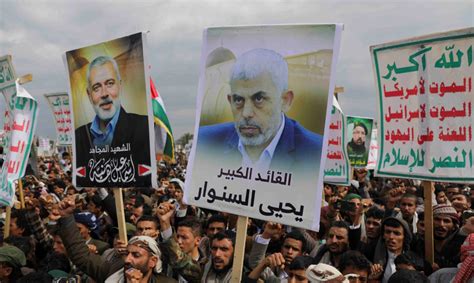
A long-overlooked Army division, the 106th Infantry Division, is finally receiving recognition for its crucial, albeit costly, stand against the German Wehrmacht during the Battle of the Bulge in December 1944. The division, largely composed of inexperienced soldiers, bore the brunt of the initial German onslaught, suffering heavy casualties but significantly delaying the enemy advance and disrupting their planned timeline. Their sacrifice, often overshadowed by the more celebrated actions of other units, is now being reassessed and honored.
For decades, the 106th Infantry Division has been relegated to a footnote in the history of the Battle of the Bulge, often remembered more for the significant losses it sustained rather than the strategic importance of its resistance. This narrative is now shifting, as historians and veterans’ groups are working to highlight the division’s vital contribution to the Allied victory. “They weren’t trained well enough. They weren’t equipped well enough. And they were thrown into a situation that no one could have possibly expected,” said historian Peter Lion, emphasizing the dire circumstances faced by the division.
The Battle of the Bulge, Hitler’s last major offensive on the Western Front, aimed to split the Allied armies and recapture the port of Antwerp, a crucial supply hub. The German attack, launched on December 16, 1944, caught the Allies largely by surprise, particularly in the Ardennes Forest, where the 106th Infantry Division was positioned. The division, nicknamed the “Golden Lions,” had only recently arrived in Europe and lacked combat experience. Many of its soldiers were replacements, filling the ranks depleted by earlier battles.
The 106th was assigned to a quiet sector of the front, considered by Allied commanders to be unlikely to see significant action. This assessment proved disastrously wrong. The division was stretched thin across a wide area, making it vulnerable to the concentrated German attack. The German forces, spearheaded by panzer divisions, quickly overwhelmed the American defenses. Two of the 106th’s three regiments, the 422nd and 423rd, were encircled and forced to surrender, resulting in the largest mass surrender of U.S. troops in the European Theater since the Civil War. Approximately 7,000 soldiers were captured.
Despite the devastating losses, elements of the 106th, particularly the 424th Infantry Regiment and attached artillery units, fought fiercely, delaying the German advance and buying valuable time for reinforcements to arrive. Their resistance disrupted the German timetable and forced them to divert resources, ultimately contributing to the failure of the offensive. The stand of the 106th at key locations, such as Skyline Drive, proved critical in slowing down the German advance toward St. Vith, a crucial crossroads town.
The significance of the 106th’s actions lies in the fact that they absorbed the initial shock of the German offensive, blunting its momentum and preventing a complete breakthrough. Their sacrifice allowed General Eisenhower to redeploy forces and establish a defensive line that ultimately stopped the German advance. Had the 106th not held its ground, even briefly, the consequences for the Allied forces could have been far more severe.
The reassessment of the 106th’s role is being driven by a combination of factors, including newly available historical documents, oral histories from veterans, and a growing recognition of the importance of acknowledging the contributions of all who served in World War II. Historians are now piecing together a more complete picture of the battle, highlighting the bravery and resilience of the 106th’s soldiers in the face of overwhelming odds.
The efforts to recognize the 106th also involve preserving the memory of the battle through memorials, museums, and educational programs. These initiatives aim to ensure that future generations understand the sacrifices made by the soldiers of the 106th and the importance of their contribution to the Allied victory. “It’s important for us to remember these stories, to remember these men, and to make sure that their sacrifice is never forgotten,” emphasized a representative from a veterans’ organization dedicated to honoring the 106th.
The story of the 106th Infantry Division serves as a reminder that even in the midst of defeat, acts of courage and sacrifice can have a profound impact on the course of history. Their stand at the Battle of the Bulge, though costly, played a crucial role in preventing a German victory and ensuring the ultimate triumph of the Allied forces. The renewed attention being given to the 106th is a testament to the enduring power of their story and the importance of recognizing the contributions of all who served in World War II.
The delay caused by the 106th allowed General Patton’s Third Army to relieve the besieged town of Bastogne, a pivotal moment in the battle. The defense of Bastogne, and the subsequent counter-offensive, marked a turning point in the Battle of the Bulge, halting the German advance and ultimately leading to their defeat. The 106th’s sacrifice, therefore, indirectly contributed to the successful defense of Bastogne and the overall Allied victory.
Furthermore, the heavy losses inflicted on the German forces during the initial days of the offensive significantly weakened their overall capabilities. The German army was already stretched thin, and the losses sustained in the Ardennes further depleted their manpower and resources. This ultimately contributed to the collapse of the German war effort in the months that followed.
The experiences of the 106th Infantry Division also highlight the importance of training and preparation in combat. The division’s lack of experience and inadequate training proved to be a significant disadvantage in the face of the German onslaught. This underscores the need for soldiers to be properly trained and equipped before being sent into battle.
The story of the 106th also raises important questions about leadership and decision-making during wartime. The decision to assign an inexperienced division to a supposedly quiet sector of the front proved to be a costly mistake. This highlights the importance of careful planning and accurate intelligence gathering in military operations.
The belated recognition of the 106th Infantry Division is a welcome development, but it also serves as a reminder of the many unsung heroes who have contributed to the defense of freedom. Their story is a testament to the courage and resilience of ordinary soldiers who, in the face of extraordinary circumstances, rose to the challenge and made a difference. The ongoing efforts to preserve their memory and honor their sacrifice are essential to ensuring that their story is never forgotten.
The soldiers of the 106th faced not only the horrors of combat but also the stigma of being part of a division that suffered a major defeat. Many veterans of the 106th felt that their service was not adequately recognized and that they were unfairly blamed for the losses sustained during the Battle of the Bulge. The current efforts to reassess the division’s role are helping to correct this historical injustice and provide these veterans with the recognition they deserve.
The Battle of the Bulge remains one of the most significant battles of World War II, and the story of the 106th Infantry Division is an integral part of that history. Their sacrifice, though often overlooked, played a crucial role in the Allied victory. The ongoing efforts to preserve their memory and honor their contribution are a fitting tribute to the courage and resilience of the “Golden Lions.”
The delayed recognition also stems from the fog of war and the inherent difficulties in accurately assessing events during and immediately after a major battle. Initial reports often focused on the scale of the defeat suffered by the 106th, overshadowing the resistance they put up. As time has passed and more information has become available, historians have been able to piece together a more nuanced understanding of the division’s role.
The personal stories of the soldiers who served in the 106th are particularly compelling. Many of these men were young and inexperienced, yet they displayed remarkable bravery in the face of overwhelming odds. Their experiences offer a powerful glimpse into the human cost of war and the sacrifices made by ordinary people in extraordinary circumstances.
The rediscovery of letters, diaries, and other personal accounts from soldiers of the 106th has been instrumental in shedding new light on their experiences. These firsthand accounts provide a vivid and intimate portrayal of the battle, highlighting the challenges and hardships faced by the soldiers on the front lines. They also offer a powerful reminder of the importance of preserving the personal stories of veterans.
The efforts to recognize the 106th Infantry Division are part of a broader movement to re-examine the history of World War II and to ensure that all those who served are properly honored. This includes paying attention to the contributions of often-overlooked units and individuals, and acknowledging the sacrifices made by soldiers from all backgrounds.
The story of the 106th also highlights the importance of learning from the past. By studying the mistakes made during the Battle of the Bulge, military leaders can gain valuable insights into the challenges of modern warfare and the importance of proper training, preparation, and leadership.
The legacy of the 106th Infantry Division extends beyond the battlefield. Their story serves as an inspiration to future generations of soldiers and a reminder of the importance of courage, resilience, and sacrifice in the face of adversity. Their example continues to inspire people to strive for excellence and to never give up in the face of challenges.
The ongoing efforts to recognize the 106th Infantry Division are a testament to the enduring power of their story and the importance of honoring the sacrifices of all who served in World War II. Their contribution to the Allied victory will never be forgotten. The story of the 106th Infantry Division is a powerful reminder of the human cost of war and the importance of preserving the memory of those who served.
The veterans of the 106th, many of whom are now in their 90s, are deeply grateful for the renewed attention being given to their division. They feel that their service has finally been recognized and that their sacrifices have not been in vain. This recognition provides them with a sense of closure and validation, knowing that their story will be remembered for generations to come.
The memorials and museums dedicated to the 106th Infantry Division serve as important reminders of their contribution to the Allied victory. These sites offer visitors the opportunity to learn about the history of the division and to pay tribute to the soldiers who served. They also serve as a place for veterans and their families to gather and remember their shared experiences.
The educational programs focused on the 106th Infantry Division are designed to teach future generations about the importance of their sacrifice and the lessons learned from the Battle of the Bulge. These programs aim to ensure that the story of the 106th is never forgotten and that their legacy continues to inspire people for years to come.
The story of the 106th Infantry Division is a testament to the human spirit and the power of courage, resilience, and sacrifice. Their contribution to the Allied victory will never be forgotten, and their legacy will continue to inspire people for generations to come. The ongoing efforts to recognize the 106th Infantry Division are a fitting tribute to the men who served and a testament to the enduring power of their story. It’s a crucial part of understanding the full scope of the Battle of the Bulge and the challenges faced by the Allied forces. The story is not just about defeat, but also about the resilience and ultimate contribution of these often-overlooked soldiers.
The lack of initial recognition also highlighted a tendency to focus on successes rather than analyzing failures in military history. The 106th’s experience provides valuable lessons about the consequences of underestimating the enemy and the importance of adequate preparation. Acknowledging these failures is crucial for preventing similar mistakes in the future.
The current effort to recognize the 106th involves not only historical research and documentation but also direct engagement with veterans and their families. These personal connections bring the history to life and provide a deeper understanding of the human impact of the war. Their stories are invaluable resources for historians and educators.
The geographical location of the fighting involving the 106th was particularly challenging. The Ardennes Forest in winter presented difficult terrain and weather conditions, further hindering the division’s ability to defend against the German attack. The dense forest provided cover for the advancing enemy, while the snow and ice made movement difficult for the American troops.
The communication breakdowns and logistical challenges faced by the 106th during the battle also contributed to their difficulties. Lines of communication were disrupted by the German advance, making it difficult to coordinate troop movements and resupply. This further hampered their ability to effectively resist the enemy.
The delayed recognition of the 106th is not unique in military history. Many units and individuals have been overlooked or unfairly criticized in the aftermath of battles. It often takes time and further historical analysis to fully understand the complexities of wartime events and to properly assess the contributions of all involved.
The reassessment of the 106th’s role is also contributing to a broader understanding of the Battle of the Bulge as a whole. By examining the experiences of different units and individuals, historians are able to create a more complete and nuanced picture of the battle. This helps to ensure that all those who served are properly recognized and that the lessons of the battle are not forgotten.
The efforts to recognize the 106th are being supported by a wide range of organizations and individuals, including veterans’ groups, historical societies, museums, and educational institutions. This broad support demonstrates the importance of preserving the memory of World War II and honoring the sacrifices of all those who served.
The story of the 106th Infantry Division is a powerful reminder of the importance of remembering the past and learning from its lessons. Their sacrifice will never be forgotten, and their legacy will continue to inspire people for generations to come.
Frequently Asked Questions (FAQ)
1. What was the 106th Infantry Division’s role in the Battle of the Bulge?
The 106th Infantry Division, largely composed of inexperienced soldiers, was positioned in the Ardennes Forest when the German offensive began on December 16, 1944. While suffering heavy losses, particularly the surrender of two regiments, the division’s resistance significantly delayed the German advance, disrupting their planned timeline and buying valuable time for Allied reinforcements to arrive. According to historian Peter Lion, “They weren’t trained well enough. They weren’t equipped well enough. And they were thrown into a situation that no one could have possibly expected.”
2. Why has the 106th Infantry Division’s contribution been overlooked for so long?
The 106th was often remembered more for the significant losses it sustained, including the largest mass surrender of U.S. troops in the European Theater since the Civil War, overshadowing the strategic importance of its resistance. The focus tended to be on units that experienced more resounding successes. Additionally, the fog of war and initial reports may have emphasized the defeat rather than the delaying actions and sacrifices made.
3. What is being done now to recognize the 106th Infantry Division’s contributions?
Efforts to recognize the 106th include historical reassessments based on newly available documents and oral histories, the creation of memorials and museums, and the development of educational programs to ensure future generations understand the division’s sacrifices. Veterans’ organizations are also playing a key role in highlighting the division’s vital contribution. “It’s important for us to remember these stories, to remember these men, and to make sure that their sacrifice is never forgotten,” stated a representative from one such organization.
4. How did the 106th’s actions affect the overall outcome of the Battle of the Bulge?
The 106th’s resistance, despite its losses, absorbed the initial shock of the German offensive, blunting its momentum and preventing a complete breakthrough. This delay allowed General Patton’s Third Army to relieve Bastogne and enabled the Allies to establish a defensive line, ultimately contributing to the failure of the German offensive.
5. What lessons can be learned from the experience of the 106th Infantry Division?
The experiences of the 106th highlight the importance of adequate training and preparation for combat, as well as the need for careful planning and accurate intelligence gathering in military operations. It underscores the importance of recognizing and learning from failures, not just successes, in military history. The story of the 106th also emphasizes the courage and resilience of ordinary soldiers in the face of extraordinary circumstances.









